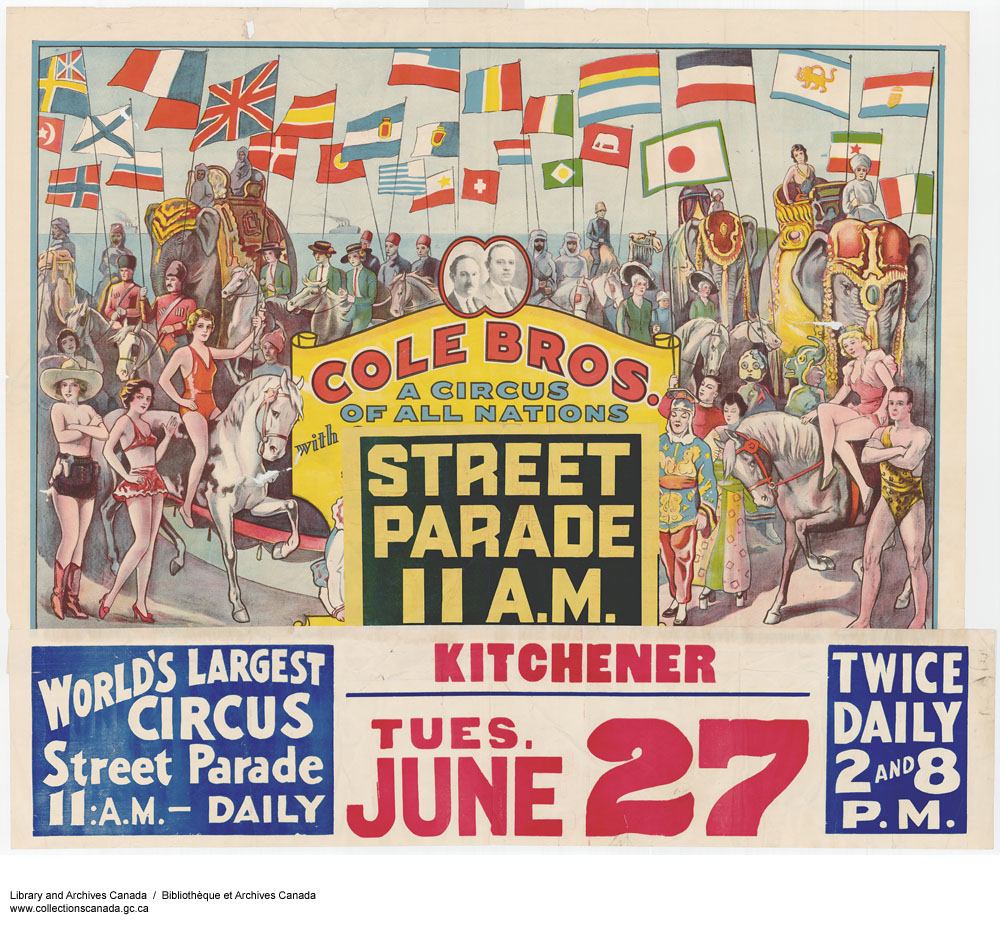The Circus in popular conception seems to wedded to America, yet one only need to think of the Roman Circus Maximus, where chariot races, animal displays and mock battles were staged, to consider the long human fascination with spectacle. The modern circus is attributed to a Brit by the name of Philip Astley, whose riding school in the late 18th Century grew to include clowns, domesticated animals, music and acrobatics. Only in 1792 would the circus cross the Atlantic to the new world. A number of circus posters at Library and Archives Canada show that the circus was a popular event in the twentieth-century dominion. It was often the lure of the foreign unknown which drew Canadians in droves to the Big Top.
 |
| Poster From 1935. Library and Archives Canada, Acc. No. 1980-84-68 |
Part of the allure of the circus was the exotic animals and people on display. Elephants, camels, tigers and lions were used to amaze patrons. A fascination with foreign animals has long appealed to circus-goers, yet with the rise of animal rights activism, the humane treatment of these performers are increasingly scrutinized. Cole Bros. Circus, still active today, was recently fined for violating the endangered species act.
Human performers were another part of the exotic draw. The Cole Bros. Circus advertised itself as a "circus of all nations", where locals could observe cultures and costume from around the world.
 |
| Poster from 1939. Library and Archives Canada, Acc. No. 1980-84-159 |
 |
| Glenbow Museum Archives. NA-1574-6 |

